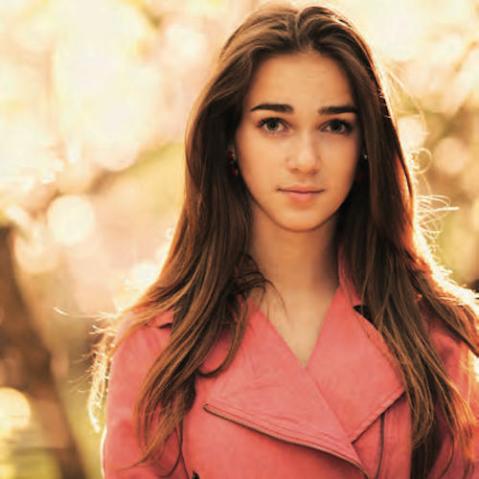How good is your exposure? Try the histogram!
If you’ve just graduated from a smartphone or point-and-shoot camera to one with manual controls, the learning process is both exciting and a little confusing. You now have the ability to ensure that your photos look exactly as you want them to. But if you’ve been relying on your camera to determine exposure until now, how can you now make sure that you’re getting it absolutely right?

It’s a common error for new photographers to try to keep their camera happy by getting the exposure indicator to ‘0’— which, of course, makes perfect sense, considering this is the camera’s way of indicating that the shot is correctly exposed. (If you want, you can read more about light meters, here.) But what your camera perceives as ‘correct’ possibly isn’t how you see the scene.
For example, if you are taking a portrait photo in the shade (under a tree) with a bright background, you’ve created the perfect conditions for a scene where your camera can become confused. In this setting, your camera wants the light in the scene to be balanced, so it takes into account the background brightness and compensates for it. Unfortunately, that means that your subject turns out very dark. So even though your camera’s exposure meter may show a ‘correct’ exposure, if you take a photo with this setting you will not get a good shot.

You might need to override your camera’s expectation of what is a ‘correct’ exposure, either in full manual mode or using exposure compensation. But how can you tell if the exposure’s good?

The histogram
A histogram can provide valuable information about the exposure of your shot. Although you shouldn’t base your exposure exclusively on the information contained in a histogram, it can provide an excellent guide and indicate where a few corrections might be made.

A histogram consists of a series of columns, usually 256 of them. These represent the 256 levels of brightness that your camera’s pixels can fall into. The very first column on the left is pure black, while the column to the far right is pure white. Between the pure white and pure black columns are all the tones your camera is capable of recording. When you see a lot of pixels (a column, or spike) to the far left or far right this can be an indication that there is under- or over-exposure.
There are several ways of bringing up a histogram for your photograph. Some cameras can show a ‘live histogram,’ which reflects the scene you’re pointing your camera at in real-time. Most cameras can show histograms in the Image Review mode (or ‘Play’ mode, as it is called on some cameras).
Judging exposure
Most things in real life are not pure white, so when your histogram shows pixels in the far-right (pure-white) column, this can be an indication that you have blown-out highlights (areas of an image that appear pure white with no detail).

As you cannot recover these details in post processing, it is important to readjust the shot to shift everything a small amount to the left by choosing a faster shutter speed, smaller aperture, or lower ISO sensitivity. Overall, you want a nice ‘mountain’ look to your histogram, without too many (or any) pixels in the pure-white column.
The same data found in the histogram also tells us when an image is potentially underexposed. Pixels in the far-left (pure-black) column can indicate “clipping”—where the shadows are so dark that you will not get any detail. Again, you can avoid this by adjusting your exposure to be slightly lighter, which will shift the histogram to the right and give the darkest areas more light.

Of course, if you’re shooting high- or low-key images, you will expect to see more data towards the right or left of the histogram respectively. And that’s why histograms are so useful when it comes to judging exposure!
The Rules of Photography and When to Break Them is Haje Jan Kamp’s exciting exploration of all the rules that we’re taught make pictures great, and a deconstruction of them to show you how to make glorious images that sing to your own tune!
[one_whole boxed=”true”]
 The Rules of Photography and When to Break Them, by Haje Jan Kamps
The Rules of Photography and When to Break Them, by Haje Jan Kamps
£9.99 Download the PDF now!
This PDF version retains the styling of the original print book.
RRP for print edition: £17.99
[button color=”Accent-Color” size=”small” url=”https://www.ilexinstant.com/product/the-rules-of-photography-and-when-to-break-them/” text=”Digital Edition”] [button color=”Accent-Color” size=”small” url=”http://www.amazon.co.uk/dp/1908150580/ref=as_sl_pc_tf_lc?tag=ilexpresscom-21&camp=1406&creative=6394&linkCode=as1&creativeASIN=1908150580&adid=05VPPR845Y3RH5TPRHWR&&ref-refURL=http%3A%2F%2Fwww.ilexinstant.com%2Fproduct%2Fthe-rules-of-photography-and-when-to-break-them%2F” text=”Amazon UK (Print)”]
[button color=”Accent-Color” size=”small” url=”http://www.amazon.com/Rules-Photography-When-Break-Them/dp/0240824334/ref=sr_1_1?ie=UTF8&qid=1401105256&sr=8-1&keywords=rules+of+photography” text=”Amazon USA (Print)”]
[/one_whole]





